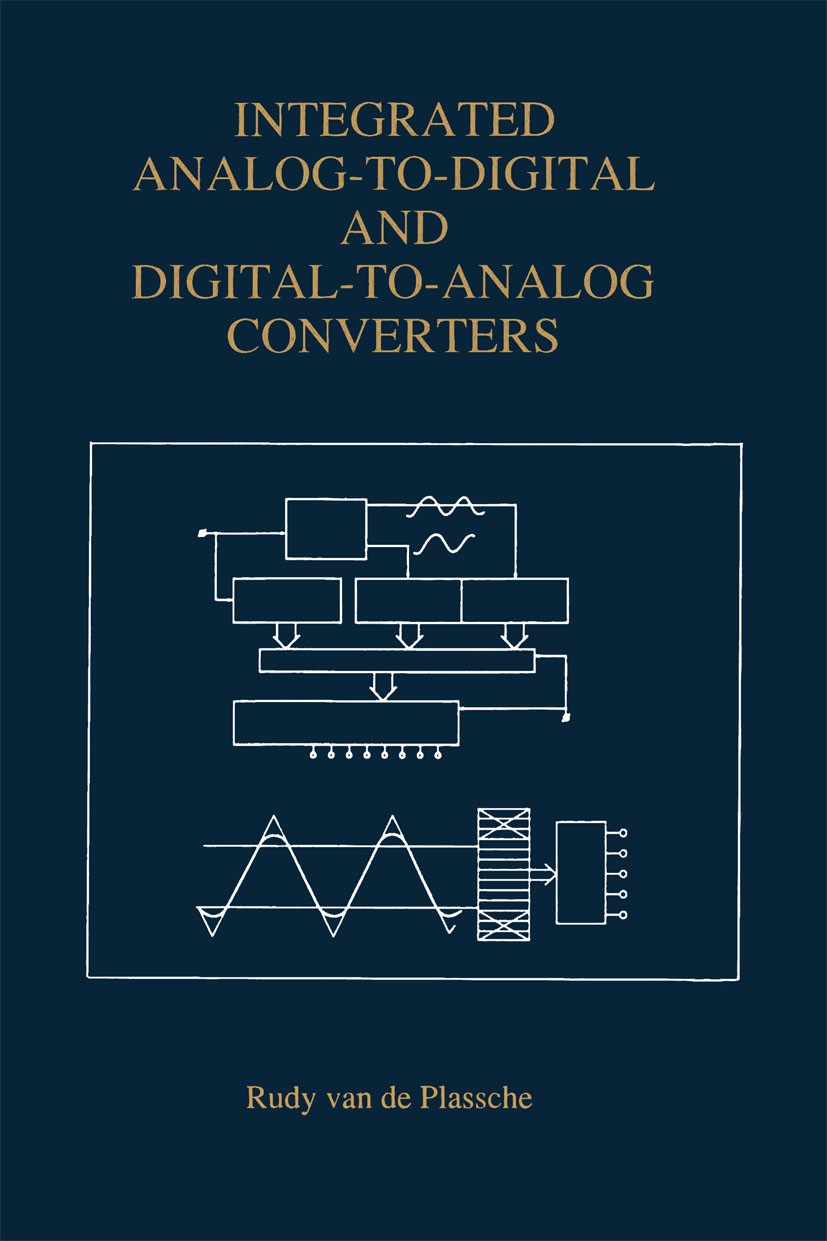| 书目名称 | Integrated Analog-To-Digital and Digital-To-Analog Converters |
| 编辑 | Rudy Plassche |
| 视频video | http://file.papertrans.cn/469/468409/468409.mp4 |
| 丛书名称 | The Springer International Series in Engineering and Computer Science |
| 图书封面 |  |
| 描述 | Analog-to-digital (A/D) and digital-to-analog (D/A) convertersprovide the link between the analog world of transducers and thedigital world of signal processing, computing and other digital datacollection or data processing systems. Several types of convertershave been designed, each using the best available technology at agiven time for a given application. For example, high-performancebipolar and MOS technologies have resulted in the design ofhigh-resolution or high-speed converters with applications in digitalaudio and video systems. In addition, high-speed bipolar technologiesenable conversion speeds to reach the gigaHertz range and thus haveapplications in HDTV and digital oscilloscopes. ..Integrated Analog-to-Digital and Digital-to-Analog Converters.describes in depth the theory behind and the practical design of thesecircuits. It describes the different techniques to improve theaccuracy in high-resolution A/D and D/A converters and also specialtechniques to reduce the number of elements in high-speed A/Dconverters by repetitive use of comparators. ..Integrated Analog-to-Digital and Digital-to-Analog Converters. isthe most comprehensive book available on the subject. Starting |
| 出版日期 | Book 1994 |
| 关键词 | Transducer; analog; circuit; coding; design; signal; signal processing; testing |
| 版次 | 1 |
| doi | https://doi.org/10.1007/978-1-4615-2748-0 |
| isbn_softcover | 978-1-4613-6186-2 |
| isbn_ebook | 978-1-4615-2748-0Series ISSN 0893-3405 |
| issn_series | 0893-3405 |
| copyright | Springer Science+Business Media Dordrecht 1994 |
 |Archiver|手机版|小黑屋|
派博传思国际
( 京公网安备110108008328)
GMT+8, 2025-11-21 14:34
|Archiver|手机版|小黑屋|
派博传思国际
( 京公网安备110108008328)
GMT+8, 2025-11-21 14:34


